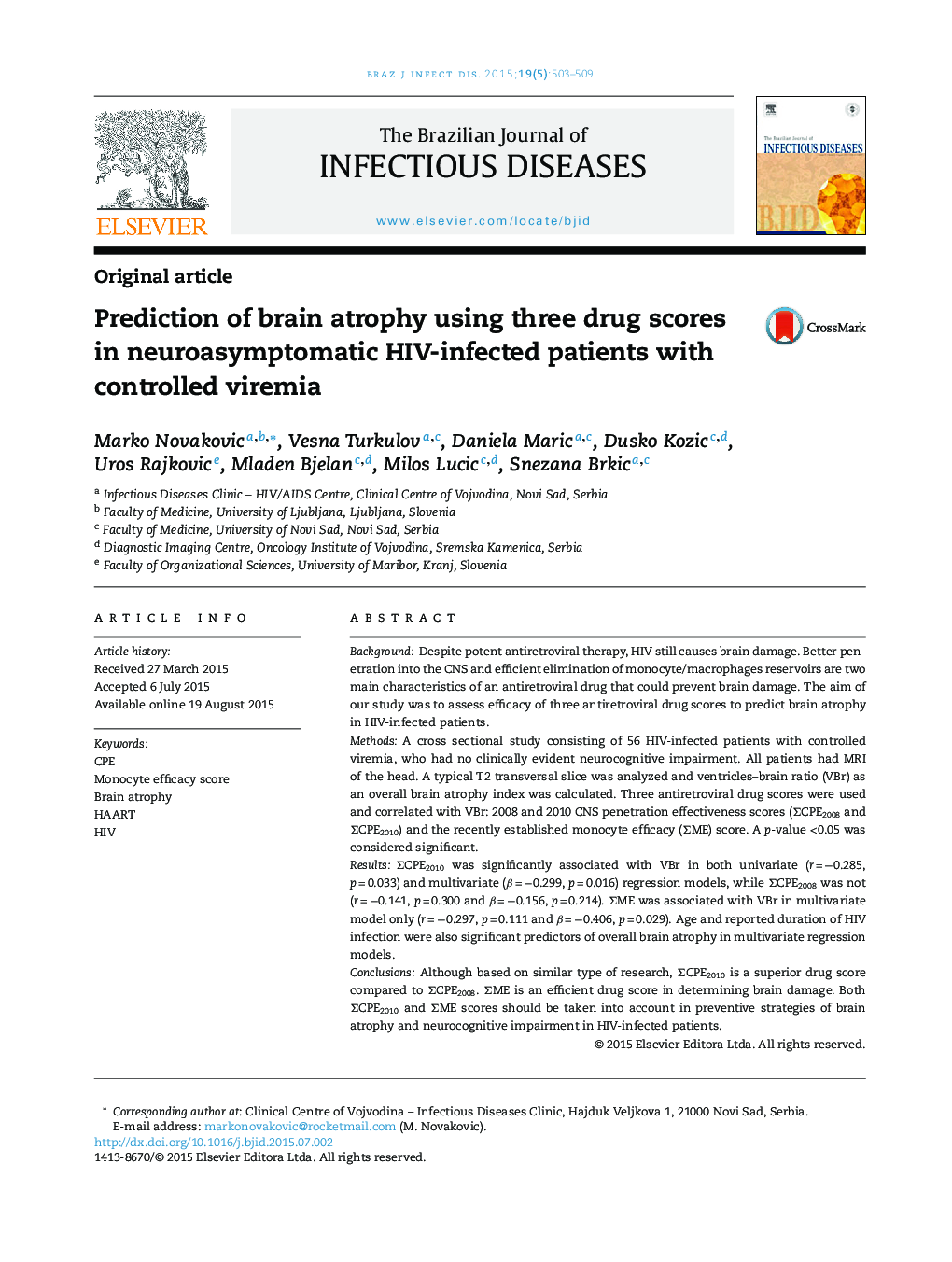| Article ID | Journal | Published Year | Pages | File Type |
|---|---|---|---|---|
| 3343806 | The Brazilian Journal of Infectious Diseases | 2015 | 7 Pages |
BackgroundDespite potent antiretroviral therapy, HIV still causes brain damage. Better penetration into the CNS and efficient elimination of monocyte/macrophages reservoirs are two main characteristics of an antiretroviral drug that could prevent brain damage. The aim of our study was to assess efficacy of three antiretroviral drug scores to predict brain atrophy in HIV-infected patients.MethodsA cross sectional study consisting of 56 HIV-infected patients with controlled viremia, who had no clinically evident neurocognitive impairment. All patients had MRI of the head. A typical T2 transversal slice was analyzed and ventricles–brain ratio (VBr) as an overall brain atrophy index was calculated. Three antiretroviral drug scores were used and correlated with VBr: 2008 and 2010 CNS penetration effectiveness scores (ΣCPE2008 and ΣCPE2010) and the recently established monocyte efficacy (ΣME) score. A p-value <0.05 was considered significant.ResultsΣCPE2010 was significantly associated with VBr in both univariate (r = −0.285, p = 0.033) and multivariate (β = −0.299, p = 0.016) regression models, while ΣCPE2008 was not (r = −0.141, p = 0.300 and β = −0.156, p = 0.214). ΣME was associated with VBr in multivariate model only (r = −0.297, p = 0.111 and β = −0.406, p = 0.029). Age and reported duration of HIV infection were also significant predictors of overall brain atrophy in multivariate regression models.ConclusionsAlthough based on similar type of research, ΣCPE2010 is a superior drug score compared to ΣCPE2008. ΣME is an efficient drug score in determining brain damage. Both ΣCPE2010 and ΣME scores should be taken into account in preventive strategies of brain atrophy and neurocognitive impairment in HIV-infected patients.
